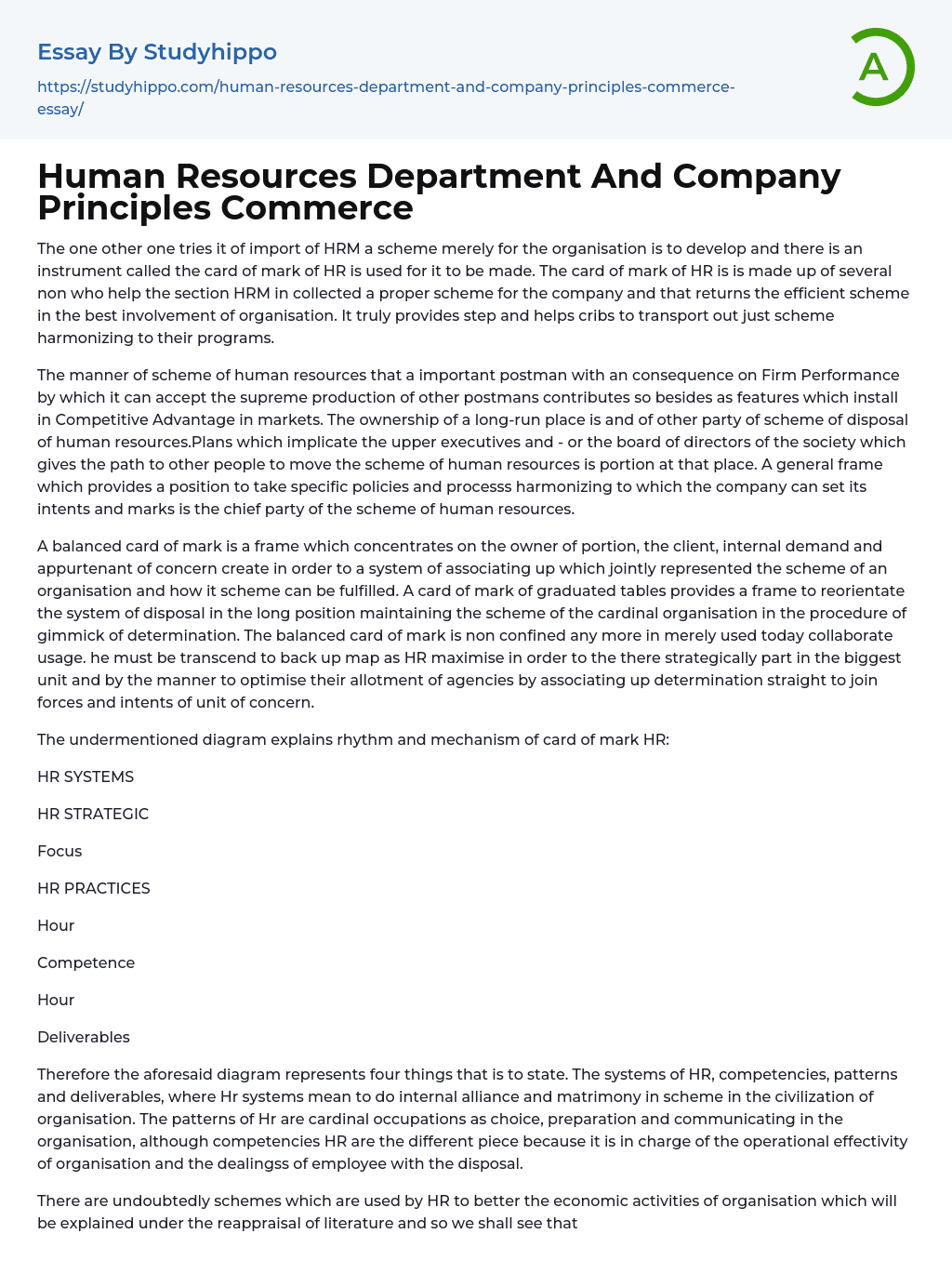

Human Resources Department And Company Principles Commerce Essay Example
The HR scorecard is essential for developing a strategic plan in an organization. It comprises various components that assist the HR department in creating an effective plan that aligns with department objectives. The HR strategy plays a crucial role in firm performance and competitive advantage. Long-term ownership of the strategy requires involvement from upper executives or the board of directors, who provide guidance for others to execute it.
The primary component is a customizable framework based on organizational goals. The balanced scorecard focuses on shareholder value, customer satisfaction, internal processes, and business support to achieve the organization's strategy. The graduated scales card reorients disposal systems while maintaining decision-making structure.
This balanced card is no longer limited to collaborative usage; instead, it emphasizes transcending boundaries to maximize HR potential and strategic participation within an organization. The text highlights the importance of alignin
...g decisions with business unit goals and objectives in order to optimize resource allocation.
The HR scorecard consists of four elements: HR systems, competencies, practices, and deliverables. HR systems aim to integrate strategies into the organizational culture, while HR practices involve tasks such as selection, training, and communication. Competencies in HR ensure operational effectiveness and employee relations with management.
To enhance economic activities within the organization, HR implements various strategies as explored further in the literature review. The text also mentions Arran Ltd., a UK-based multi-divisional retail fiscal services company that introduced the Balanced Scorecard concept and developed a performance measurement system using custom-designed software. The successful application of this approach within their Retail Division led to its adoption across Arran Ltd., resulting in the development of a Corporate Balanced Scorecard and several Divisional Balanced Scorecards based o
the design and systems of their Retail Division over time. Arran Ltd selected the Balanced Scorecard as their preferred performance management tool because they recognized the need for better management and performance information in their Retail Division. They also sought improved methods of rewarding performance. The Balanced Scorecard provided a more structured approach to presenting various performance measures, including traditional financial elements of control. Truro, a multi-divisional oil company based in the Middle East, sought assistance from an external consulting firm to implement the Balanced Scorecard. Multiple Balanced Scorecards were developed for their Corporate and Organizational unit levels.
